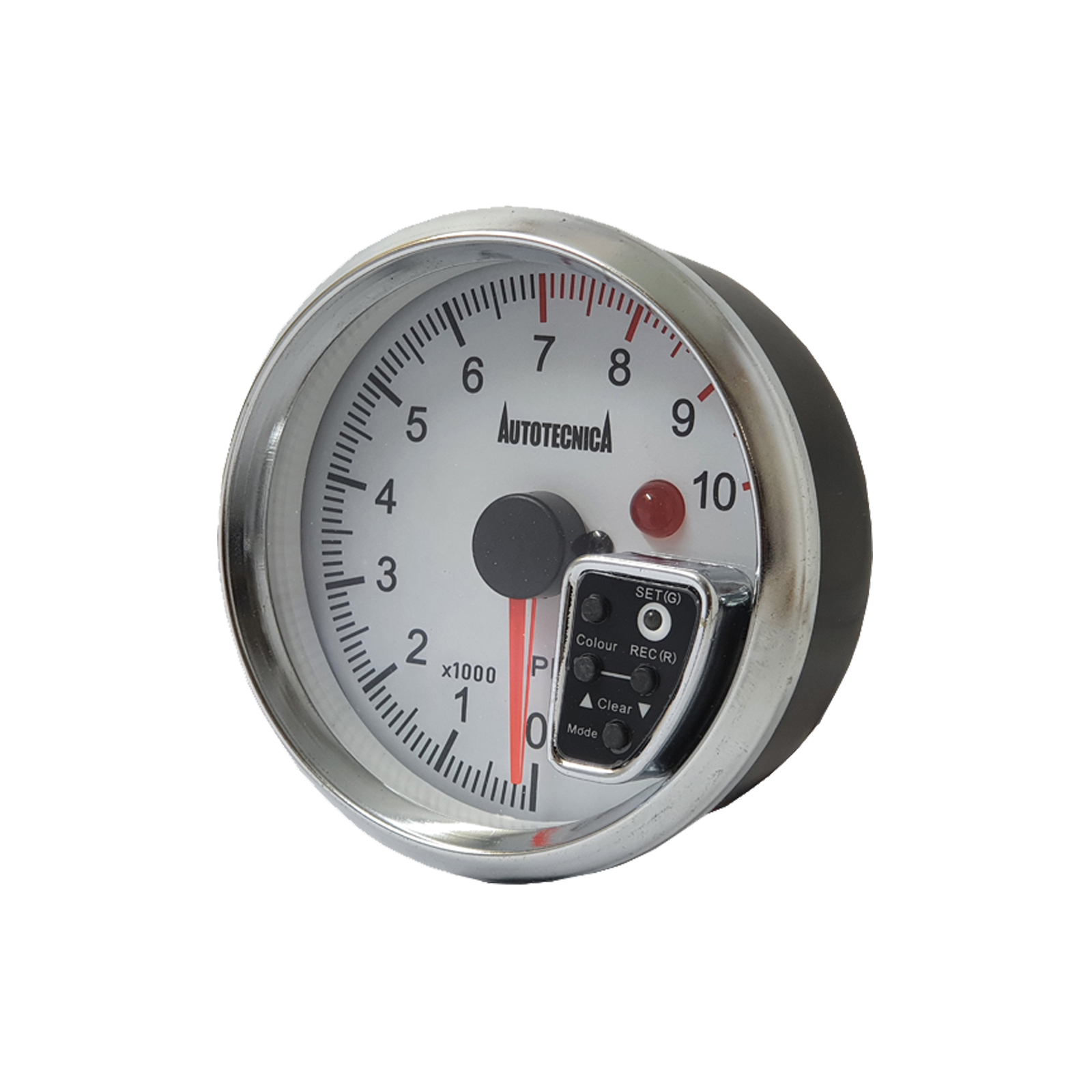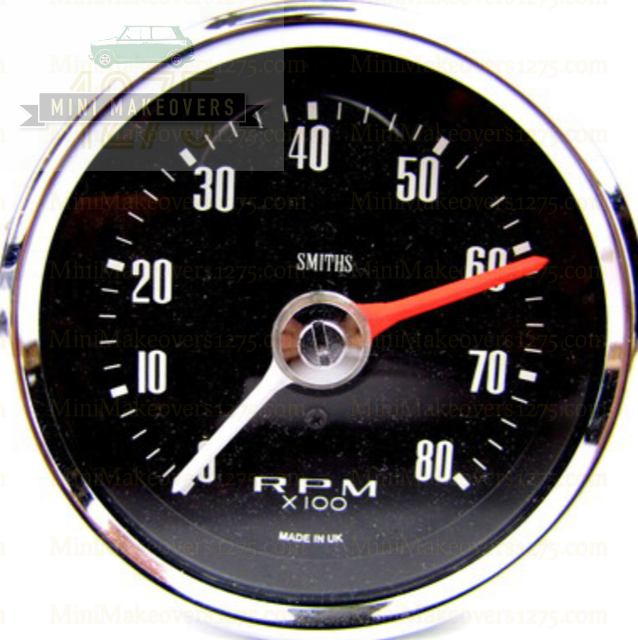Leading Reasons That Every Motorist Needs a High-Quality Tachometer
Leading Reasons That Every Motorist Needs a High-Quality Tachometer
Blog Article
The Value of a Tachometer in Keeping An Eye On Engine Rate and Performance in Automotive Applications
In the realm of automotive engineering, the tachometer stands as a pivotal instrument in the driver's toolbox, giving a direct window right into the internal operations of a lorry's engine. Beyond its feature as a plain scale of revolutions per minute (RPM), the tachometer works as an important device for enthusiasts and experts alike, using real-time understandings into engine performance and wellness. Understanding the importance of this tool surpasses surface-level monitorings, delving into the complex relationship between engine speed, power outcome, and total driving experience. As we check out the complex role of the tachometer in automobile applications, a much deeper admiration for its effect on vehicle characteristics and efficiency begins to emerge.
Relevance of Monitoring Engine RPM
Monitoring engine RPM, or revolutions per min, is a critical element of automotive upkeep and efficiency analysis. Engine RPM straight correlates with the speed at which the engine's crankshaft turns, suggesting exactly how rapidly the engine is running - tachometer. By keeping track of RPM, auto mechanics can evaluate the health of the engine, detect prospective issues, and fine-tune performance. An abnormal RPM analysis may signal troubles such as engine misfires, damaged ignition system, or concerns with the fuel delivery system. Continually high RPM analyses could show hostile driving habits or the demand for a greater gear change to enhance fuel effectiveness.
In addition, keeping track of engine RPM is crucial for performance assessment in auto racing and high-performance vehicles. In summary, keeping an eye on engine RPM is not just vital for discovering concerns however additionally for optimizing engine performance in different auto applications.

Advantages of Real-Time Information
In automotive applications, real-time data plays an important duty in giving instant insights right into the efficiency and problem of the lorry. By continuously keeping track of different specifications such as engine speed, temperature, fuel consumption, and more, real-time data uses countless advantages that add to improved effectiveness and security when driving.
One considerable advantage of real-time data is its ability to sharp drivers and professionals to any kind of abnormalities or problems immediately. This positive approach allows quick recognition of prospective problems, permitting prompt interventions to stop additional damage or breakdowns. In addition, real-time information helps with efficiency optimization by providing immediate comments on driving practices and engine effectiveness. Drivers can readjust their habits in real-time based on this information to attain much better fuel economic situation and extend the life-span of their automobile.

Furthermore, real-time information plays an important duty in modern auto diagnostics, making it possible for professionals to quickly identify and resolve malfunctions. This causes reduced downtime, reduced upkeep expenses, and ultimately, enhanced total vehicle dependability and durability (tachometer). By utilizing the power of real-time information, automotive stakeholders can make informed choices that favorably impact both the performance and durability of the vehicle
Influence on Equipment Shifts
Reliable gear shifts in automobile applications dramatically influence overall efficiency and driving experience. The tachometer plays an essential function in enhancing equipment changes by giving real-time engine rate data to the chauffeur. When coming close to the redline on the tachometer, it indicates the motorist to upshift to stop over-revving the engine and causing possible damages. On the various other hand, downshifting at the appropriate minute can aid keep the engine in its power band, ensuring responsive acceleration when required.
Additionally, the tachometer help in achieving smoother gear changes, specifically in hand-operated transmissions. By checking engine rate, chauffeurs can perform gear shifts at the optimum RPM variety, reducing jerking activities and lessening wear on the transmission components. This accuracy in equipment modifications not only boosts driving convenience however also adds to sustain effectiveness.
Enhancing Fuel Performance
Provided the important role the tachometer plays in optimizing equipment changes for performance and engine health, it straight adds to maximizing gas efficiency in automotive applications. By supplying real-time feedback on engine speed, the tachometer helps chauffeurs in keeping the most reliable RPM Learn More variety for gas economic climate. When drivers continually keep an eye on the tachometer and adjust their driving habits appropriately, they can stay clear of unnecessary fuel intake triggered by over-revving or hauling the engine.
Furthermore, the tachometer aids chauffeurs recognize the most fuel-efficient gear to be in at any provided minute, avoiding the engine from functioning harder than needed. This is specifically important throughout velocity and cruising, where being in the appropriate gear can substantially influence fuel efficiency. Furthermore, the tachometer can signal chauffeurs to possible mechanical issues that can be adversely impacting fuel economy, such as a sliding clutch or a clogged air filter. In final thought, the tachometer offers as a beneficial tool in enhancing fuel effectiveness by advertising ideal driving behaviors and recognizing areas for improvement in the car's browse around here performance.

Maximizing Engine Longevity
The tachometer's function in checking engine speed and efficiency is important in making certain the durability of automotive engines. Checking the tachometer enables drivers to stay within the advised RPM range for their automobile, preventing unneeded pressure on the engine and expanding its life expectancy.

Verdict
To conclude, the tachometer plays a vital duty in keeping track of engine rate and performance in auto applications. By giving real-time information on RPM, it permits efficient equipment shifts, improved fuel performance, and optimized engine longevity. This tool is important for keeping optimum engine performance and next page ensuring the overall performance of a lorry.
Report this page